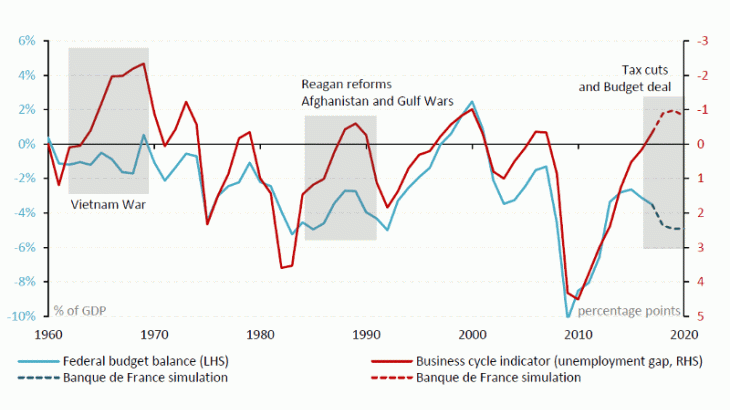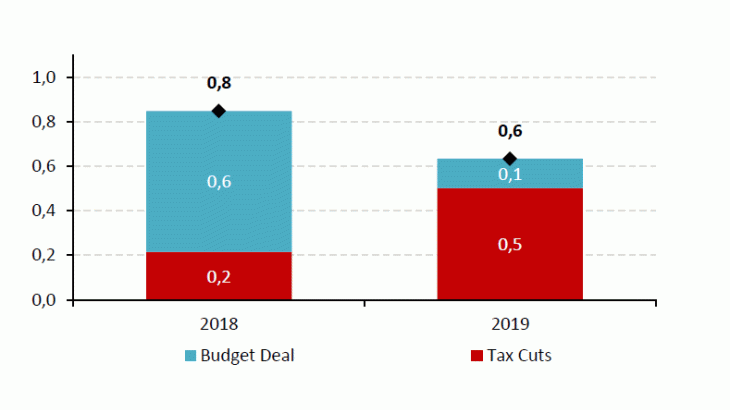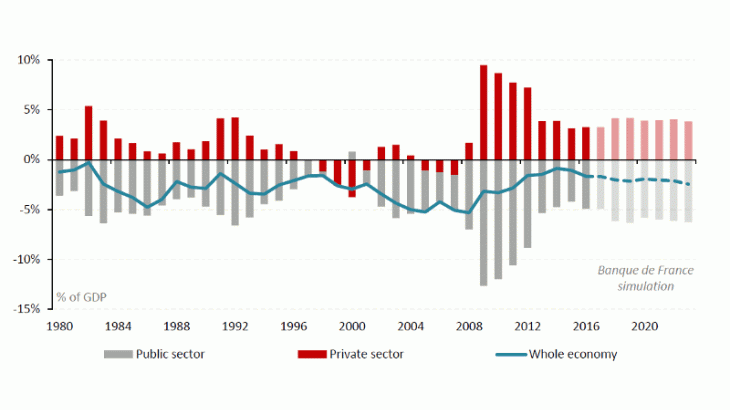On average, a 1-percentage point tax cut results in a GDP gain of between 0.3-0.5 percentage point (this is what is known as the fiscal multiplier). While this elasticity appears relatively small, the amounts concerned by the TCJA could nevertheless generate significant GDP gains (in red in Chart 2). In particular, the sharp reduction in the corporate tax rate should have a significant and immediate impact, albeit of limited duration. For the reform to be effective, companies must choose to use the profits generated by this tax cut for productive investment. In recent years, the increase in profits has led to a sharp rise in dividends paid and share buybacks which could limit the expected gains from tax cuts in terms of short-term growth. For households, the effects of the income tax cut (and the rise in the deduction ceiling) should be significant but more spread out over time.
However, the effects of the Bipartisan Budget Act of 2018 appear to be greater than those of the tax cuts. The impact of this Act on growth (in blue in Chart 2) is immediate and considerable for the two years concerned by the rise in public spending (fiscal multiplier close to 1 in the first year).
… at the expense of a severe worsening of the trade deficit and public debt
The positive effects of this fiscal stimulus on demand will result in a marked widening of the US trade and current account deficits, which are expected to reach 4% and 3.8% of GDP respectively in 2019 (against 2.9% and 2.4%, respectively, in 2017).
A breakdown by institutional sector (Chart 3) shows a sharp deterioration in the general government deficit, which should widen from 4.8% of GDP in 2017 to 6.1% in 2019. Conversely, the lower tax burden on the private sector should allow it to mobilise additional savings, reducing the risk to the financing of the current account deficit. With all effects combined, the worsening of the general government deficit is expected to push up public debt by 10 percentage points of GDP, to stand at close to 120% of GDP by 2027.



